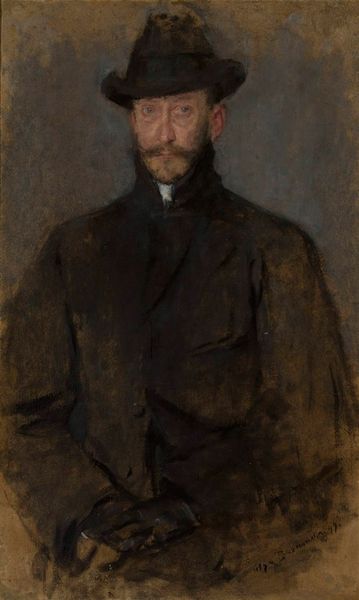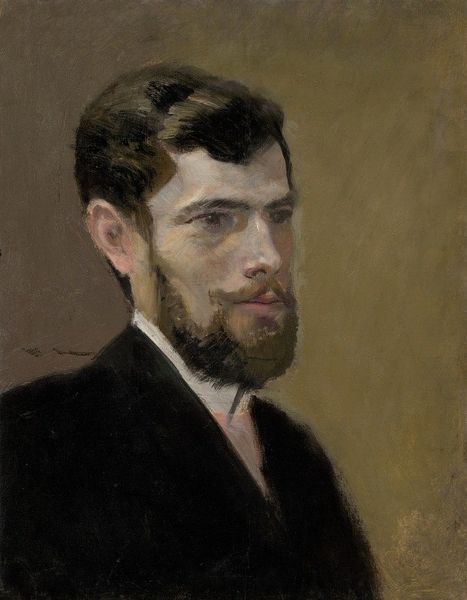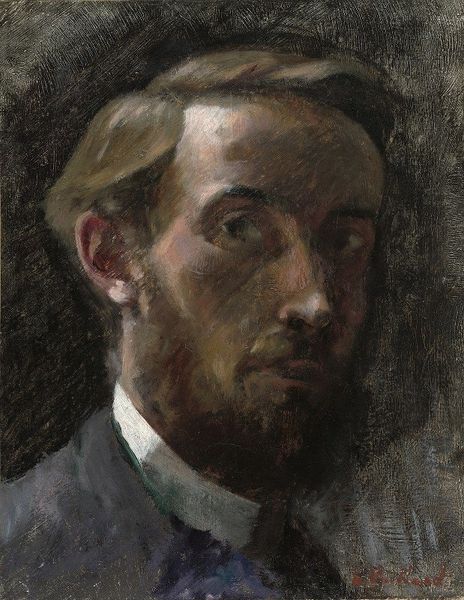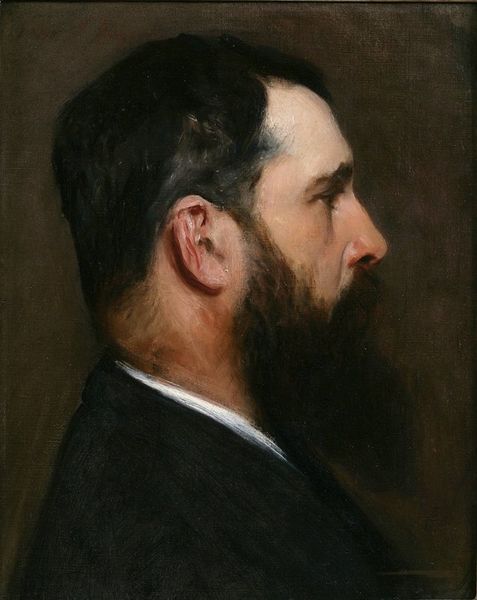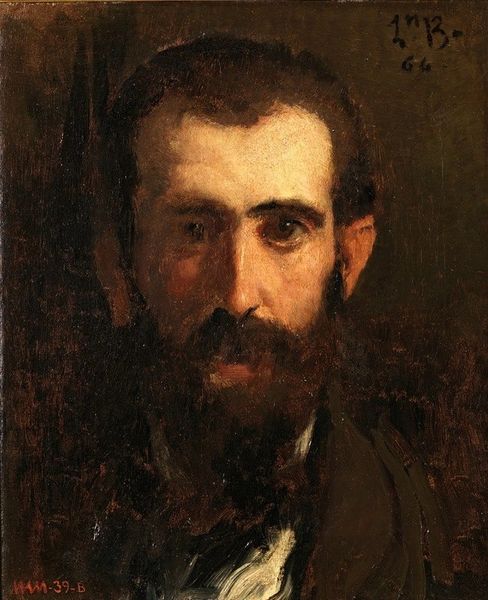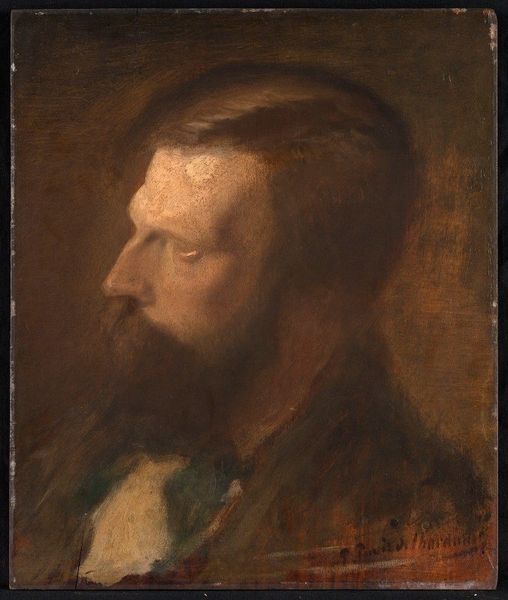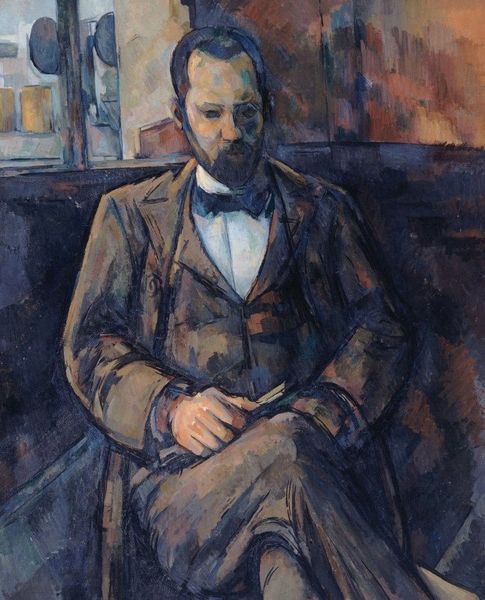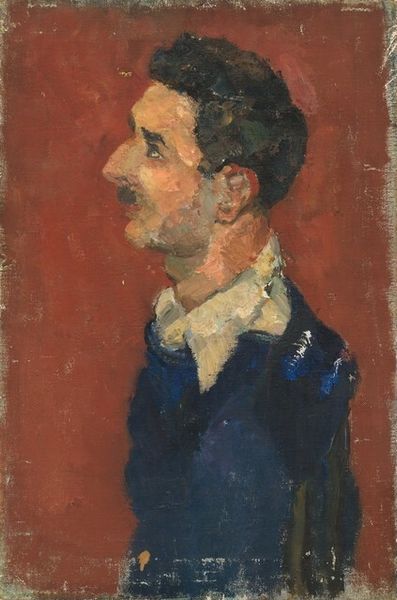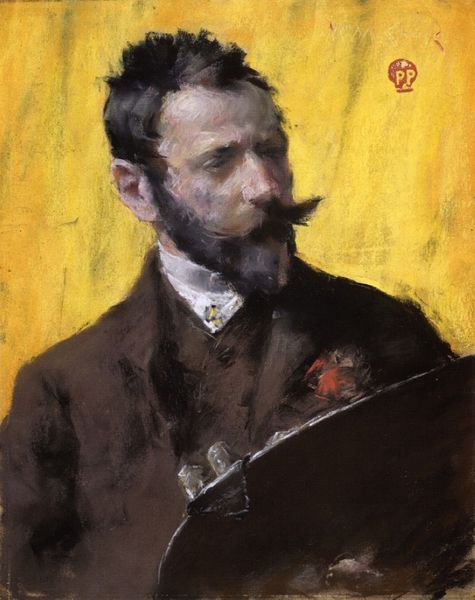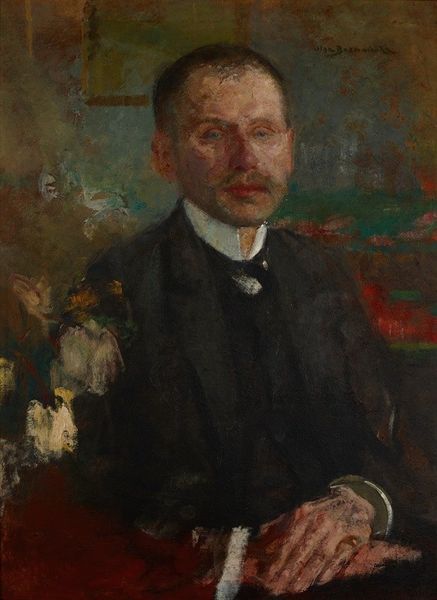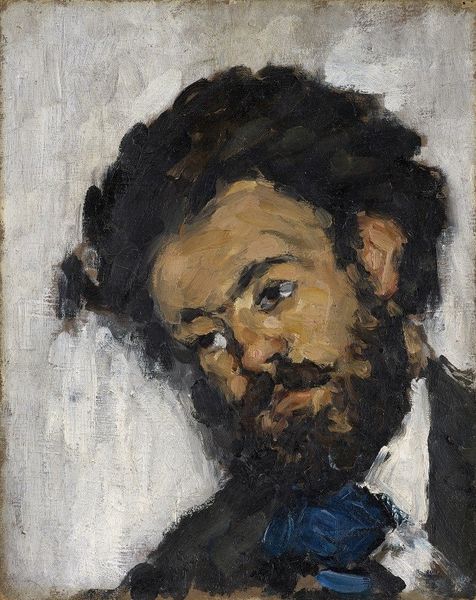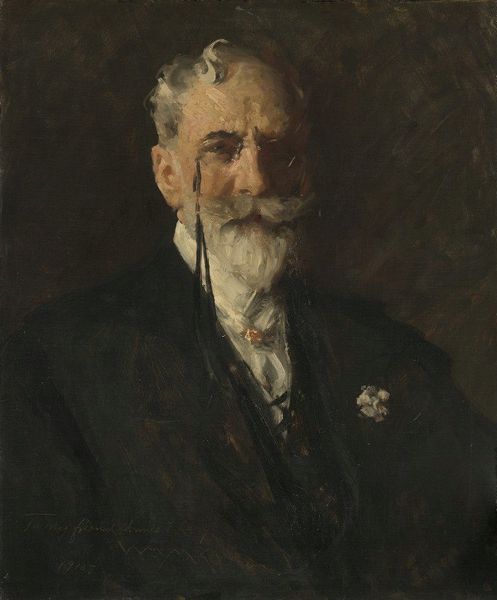
Copyright: Public Domain: Artvee
Editor: This is Edgar Degas's "Portrait d'artiste" from around 1863, done with oil paints. It gives off a rather introspective, even melancholy feeling, wouldn't you say? How do you interpret this work? Curator: I see it as Degas engaging in a visual dialogue with the established traditions of portraiture, especially within the artistic circles of Paris at that time. Consider the institutional pressures he might have felt as a young artist trying to establish his identity. The muted colors and somewhat unfinished quality… what do they suggest to you in that context? Editor: Well, perhaps he's signaling a departure from the rigid academic styles that were dominant then? Maybe implying that artistic identity is always in progress? Curator: Precisely. And how might this self-representation challenge the viewer’s expectations of the artist’s role within society? Think about the rise of the artist as a public figure during the 19th century. Was this portrait intended for public consumption, or a more private reflection? Editor: That's interesting. The slightly withdrawn gaze suggests it wasn't necessarily meant for a wide audience, more a personal statement maybe? It certainly isn’t as grand or posed as many official portraits of the time. Curator: Exactly. So, we can appreciate it as a subtle commentary on the artist’s position within the cultural landscape. It reflects Degas's negotiation of personal expression with societal expectations, using the portrait as a platform for this quiet revolution. Editor: I never considered the institutional context so directly. Now, the painting seems far more loaded with meaning! Curator: That's the beauty of art history; seeing how the personal and the political intertwine. I think I better grasp Degas now, knowing how he questions the institutions and its expectation with art.
Comments
No comments
Be the first to comment and join the conversation on the ultimate creative platform.
